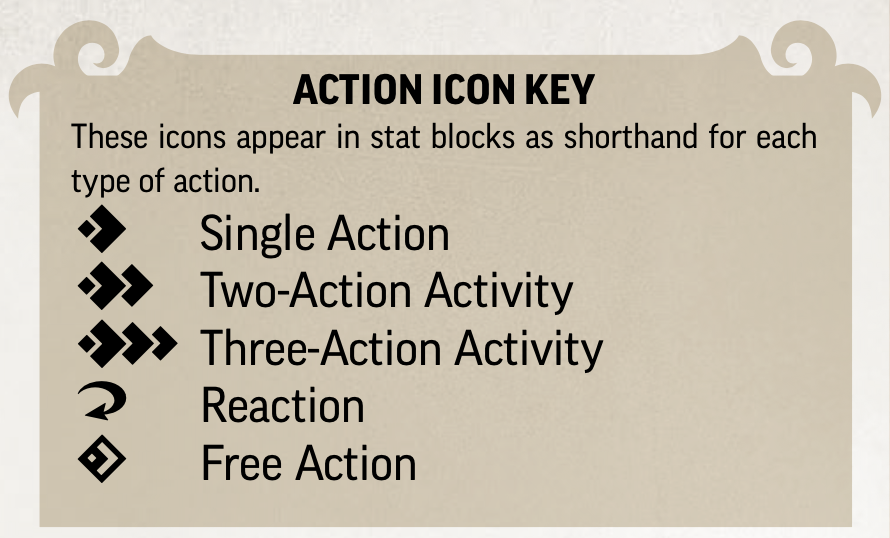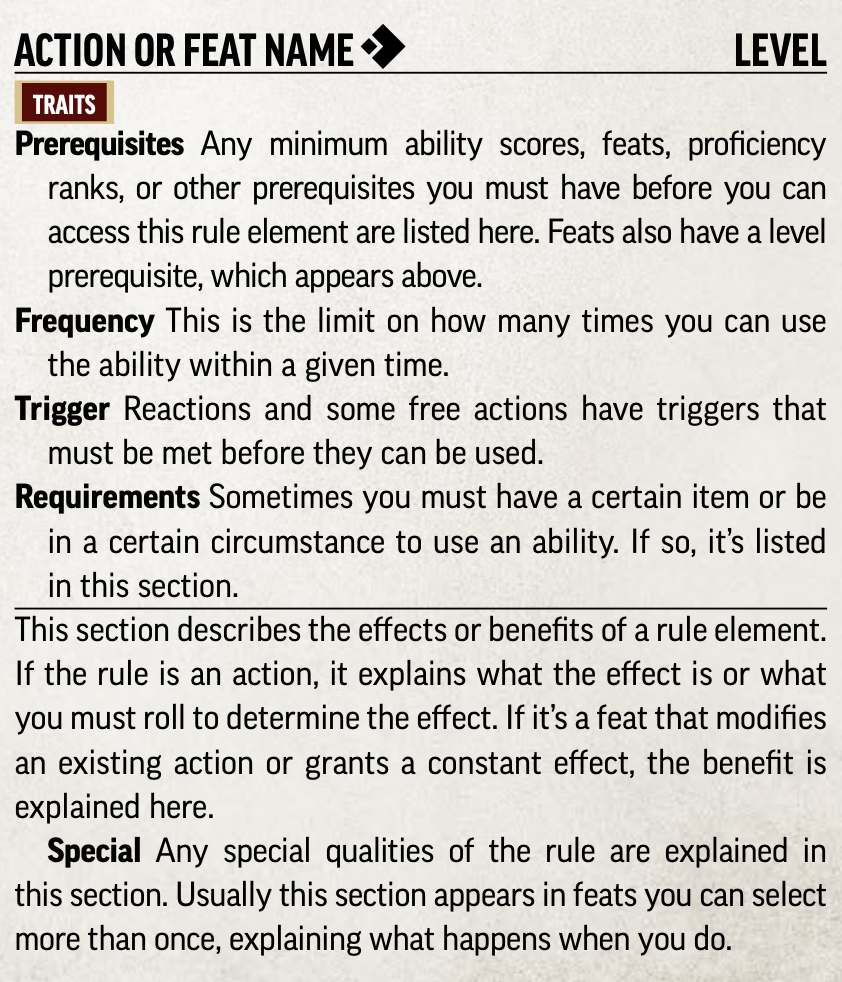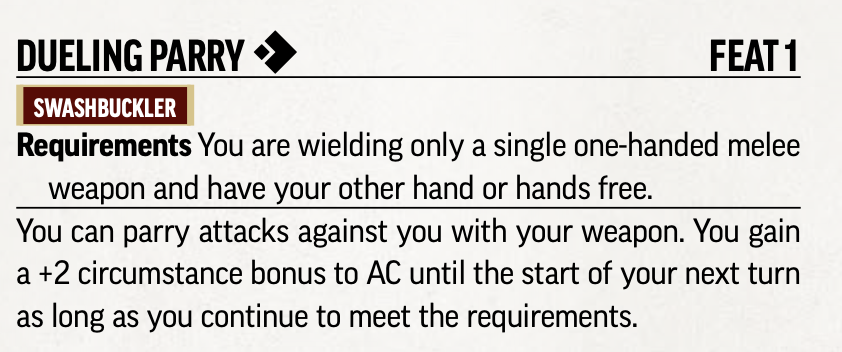Time Management and Actions
In Pathfinder 2nd edition there has been a strong attempt to decrease complexity and increase playability. For those of us accustomed to earlier iterations of these role playing games some of these changes make sense. However, one of the changes that seems to cause some confusion is the way actions are handled. Let us take a quick look at actions and their costs.
Time is broken into two parts: exploration and encounters. Exploration is free-form. This is when travel happens, when information gathering, seeking employment, carousing, developing character plots/networks/goals, etc take place. For those more action driven, Encounters is where it is at. Encounters are divided into rounds (~6 second) during which the character may take actions, make reactions and interact with other players be they PC, NPC or environmental.
We should recognize this time mechanic is an attempt to provide structure and create some order that allows for all at the table to make meaningful input to the story. It may also be helpful to recall that all the actions (from the highest to lowest initiative) occurring within a round are happening within that 6 seconds.
In any given round one may perform 3 actions. Most simple actions e.g. swinging a weapon, opening an unlocked door, moving a short distance, or Dueling Parry only require a single action. Other activities require more than a single action. These activities often include special class abilities such as the fighter’s Double Slice Feat or the action to Administer First Aid which require 2 actions. There are more involved activities that require all three actions. Now, just to sow a small amount of confusion there are also free actions and reactions. Free actions do not require the expenditure of any actions but usually must be done during the character’s turn. Reactions are exactly that, reactions to specific triggers, such as Attack of Opportunity.

To determine the number of actions required to perform an activity, one just looks at the Stat Block for the activity or action in question.

Regardless of the game mechanic they convey, rules elements are always presented in the form of a stat block, a summary of the rules necessary to bring the monster, character, item, or other rules element to life during play. The general format for stat blocks is shown to the Left. Entries are omitted from a stat block when they don’t apply, so not all rule elements have all of the entries given in the example.

Delay is a free action with a trigger of Your Turn Begins. This is an action taken at the very beginning of your turn. You will not be able to perform any other action before you Delay.

Reactive Shield (above) is a Reaction . Note there is a Trigger and a Requirement to use this ability. As a Reaction it does not count against your three action budget during your turn.
Below is Dueling Parry. This is a single action activity and does reduce your available actions this turn by one. This also has a Requirement that must be met to be able to perform this activity.

The following two stat blocks show two and three action activities. Pay special attention to the Manipulate trait associated with Administer First Aid. Any action with the Manipulate trait may trigger a Free Action or more likely a Reaction from others involved in this encounter. For example the Attack of Opportunity feat has a “Trigger: A creature within your reach uses a manipulate action or a move action, makes a ranged attack, or leaves a square during a move action it’s using.” From an around-the-table perspective, it is helpful when you the player make it known if you are using an ability that may trigger a response. While the Game Master ultimately makes the call on the applicability of a given rule, it is helpful to share that kind of information as the Game Master may not know the particulars of every given action or quite frankly may have his or her hands full managing the rest of the encounter! On a personal note, I appreciate when the player pitches in.


Time management during your turn is just as crucial as watching your hit points or managing the number of uses from a magic item. When done correctly, encounters become challenging and memorable. Remember, this is a game of cooperative story-telling. When the story tellers (we the players and the game master) share the same basic rules for interacting in the world, it becomes easier to lose oneself in the creation process.

